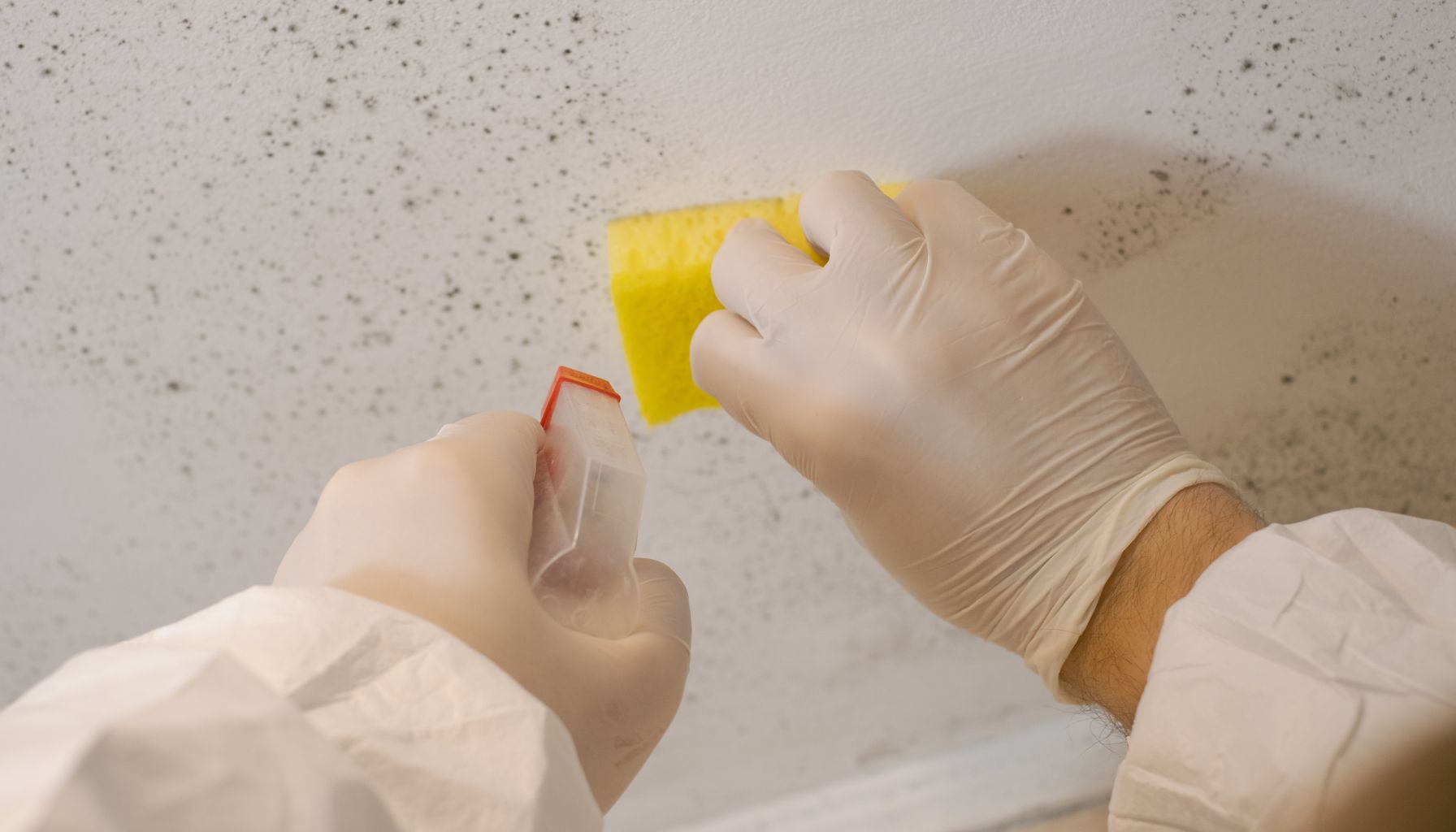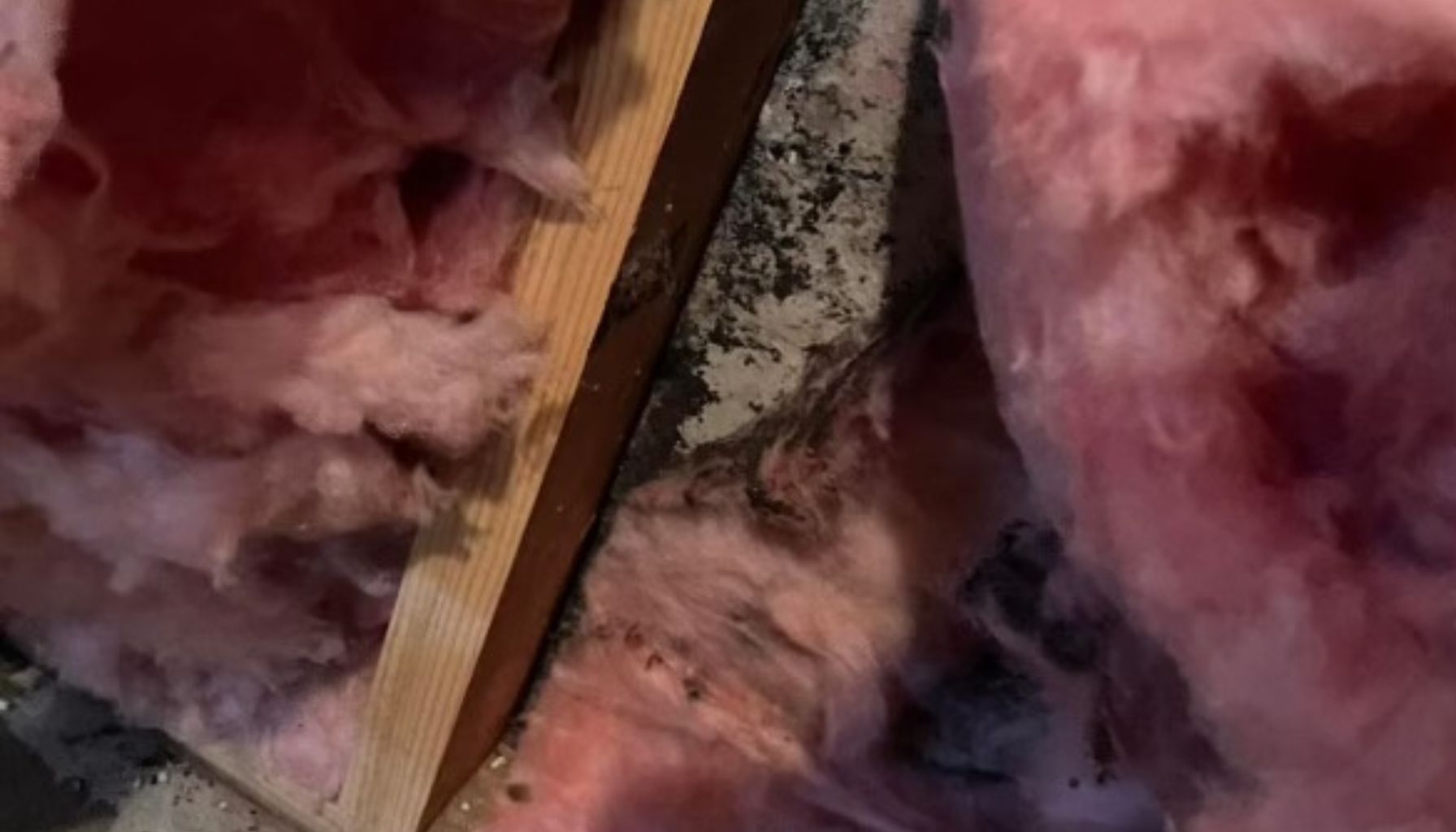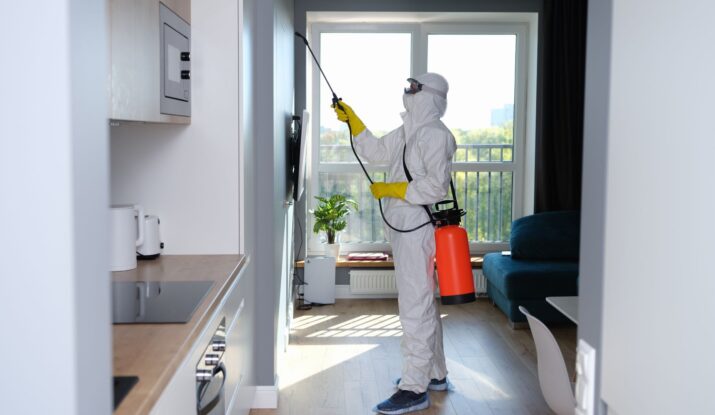If you’re a DIYer or just want some professional help, we’ve got you covered.
In the world of mold damage restoration, you are faced with a crucial decision: tackle the task yourself or enlist the help of professional services.
This article aims to guide you through this dilemma by providing a comprehensive comparison of the benefits and drawbacks of both options.
Whether you are a DIY enthusiast looking to save some money or someone seeking expert assistance for a thorough restoration, we have got you covered. So, let’s weigh the pros and cons, shall we?

Identifying Mold Damage
Recognizing signs of mold in your home
When it comes to mold damage, the first step is to be able to identify the signs of mold growth in your home. Mold can thrive in areas with excess moisture and poor ventilation, such as bathrooms, basements, or areas affected by water damage. Look out for visible mold growth, a musty odor, water stains on walls or ceilings, and respiratory issues like coughing and sneezing. Being able to recognize these signs will help you take immediate action to prevent further damage.
Understanding the risks of ignoring mold damage
Ignoring mold damage can have severe consequences for both your health and your home. Mold spores can trigger allergies and respiratory problems in individuals with sensitivities. Prolonged exposure to mold can lead to more serious health issues, such as asthma, bronchitis, or even infections. Additionally, mold can cause structural damage to your home, compromising its integrity. Ignoring mold damage can result in costly repairs and a decrease in property value. It is important to address mold issues promptly to minimize the risks associated with it.
Different types of mold and their effects
There are various types of mold that can be found in homes, each with its own set of effects. Some common types include Aspergillus, Stachybotrys (also known as black mold), Penicillium, and Cladosporium. Each mold type may vary in color, texture, and potential health risks. For instance, Stachybotrys is known to produce mycotoxins that can cause respiratory problems. Understanding the different types of mold will help you determine the appropriate measures to take during the restoration process. It is recommended to consult with a professional to accurately identify the type of mold and its potential effects.
Mold Damage Restoration: A Basic Overview
What does mold damage restoration entail?
Mold damage restoration involves the removal of mold growth, cleaning and disinfecting affected areas, and restoring the affected space to its pre-damaged condition. The goal of mold damage restoration is to not only eliminate visible mold but also address the underlying cause of the mold growth to prevent its recurrence. This typically involves thorough inspection, containment of the affected area to prevent cross-contamination, removal of affected materials, proper cleaning, and drying of the space.

The process of mold remediation
The process of mold remediation typically involves several steps. Firstly, a professional mold inspector will assess the extent of the mold damage and identify the source of moisture causing the mold growth. Next, the affected area will be contained using physical barriers and negative air pressure to prevent the spread of mold spores. Any materials that are beyond repair will be safely removed. The remaining surfaces will be thoroughly cleaned and treated with antimicrobial agents. Finally, the space will be dried using dehumidifiers and fans to prevent further mold growth.
Safety measures during mold damage restoration
Safety should be a top priority during mold damage restoration. Mold spores can easily become airborne and spread throughout your home, leading to further contamination. It is essential to wear protective clothing, including gloves, goggles, and masks, to prevent exposure to mold spores. Adequate ventilation should be maintained during the restoration process to reduce the concentration of mold spores in the air. Additionally, it is important to properly dispose of contaminated materials to avoid the risk of cross-contamination.
DIY Mold Damage Restoration
When is it appropriate to handle mold damage yourself?
Handling mold damage yourself may be appropriate for small, isolated areas of mold growth, such as on bathroom tiles or a small section of a wall. If the affected area is less than 10 square feet and there is no visible structural damage, DIY mold damage restoration can be a feasible option. However, it is important to ensure that you have the necessary knowledge, tools, and safety precautions in place before attempting to remove mold yourself.

Necessary tools and materials for home mold removal
Before you embark on DIY mold damage restoration, it is crucial to gather the necessary tools and materials. These may include a respirator or mask, gloves, protective clothing, plastic sheets, duct tape, HEPA vacuum cleaner, scrub brushes, non-ammonia detergent, hydrogen peroxide or vinegar, and a dehumidifier. Having these tools and materials readily available will allow you to effectively and safely remove mold from your home.
Detailed steps for DIY mold damage restoration
If you decide to handle mold damage restoration yourself, here are some detailed steps to guide you through the process:
- Assess the extent of the mold damage and identify the source of moisture.
- Contain the affected area using plastic sheets and duct tape to prevent the spread of mold spores.
- Remove any damaged materials, such as drywall or carpeting, that cannot be salvaged.
- Thoroughly clean the surfaces using a non-ammonia detergent or a mixture of hydrogen peroxide and water.
- Scrub the affected area with a scrub brush to remove visible mold.
- Use a HEPA vacuum cleaner to remove mold spores from the air and surfaces.
- Dry the area completely using a dehumidifier and fans to prevent further mold growth.
- Dispose of all materials used during the cleanup process properly.
Precautions to take when handling mold cleanup yourself
When handling mold cleanup yourself, it is important to take certain precautions to protect yourself and prevent further damage. Always wear appropriate protective clothing, including gloves, goggles, and a respirator or mask, to avoid direct contact with mold and inhalation of mold spores. Ensure proper ventilation by opening windows and using fans. Additionally, it is crucial to identify and address the source of the moisture causing the mold growth to prevent its recurrence.
Pros of DIY Mold Damage Restoration
Cost-saving potential of DIY
One of the significant advantages of DIY mold damage restoration is cost savings. Hiring professional mold restoration services can be expensive, especially for minor mold problems. By handling the cleanup yourself, you can avoid the costs associated with professional services.
Flexibility to tackle minor mold problems at your own pace
DIY mold damage restoration allows you to address minor mold problems on your own schedule. As long as the affected area is small and manageable, you can take your time to thoroughly clean and remediate the mold without the immediate need for professional intervention.
Sense of accomplishment from handling the cleanup yourself
Successfully completing a DIY mold damage restoration project can provide a sense of accomplishment. You will have the satisfaction of knowing that you took control of the situation and restored your home to a safe and mold-free condition.
Cons of DIY Mold Damage Restoration
Risks of inadequate mold removal
One of the major drawbacks of DIY mold damage restoration is the risk of inadequate mold removal. Without proper knowledge and experience, it is possible to miss hidden mold or not effectively eliminate all mold spores. Inadequate mold removal can lead to the recurrence of mold growth and potential health risks.
Potential for exposure to harmful mold spores
Handling mold cleanup yourself puts you at a higher risk of exposure to harmful mold spores. The process of cleaning and removing mold can release mold spores into the air, increasing the chances of inhalation. For individuals with mold allergies or respiratory conditions, this exposure can have adverse health effects.
Time and effort involved in DIY mold damage restoration
DIY mold damage restoration requires a significant amount of time and effort. From assessing the extent of the mold damage to thoroughly cleaning and drying the affected area, the process can be time-consuming. Additionally, if you encounter any challenges or complications during the restoration process, it may further prolong the time and effort required.
Professional Mold Damage Restoration Services
When to call in the professionals
There are certain situations where it is advisable to call in professional mold damage restoration services. If the mold growth covers an area larger than 10 square feet, if there is visible structural damage, or if you have health concerns related to mold exposure, it is best to seek professional assistance. Professionals have the necessary expertise and tools to handle larger-scale mold remediation effectively.
What to expect from a professional mold damage restoration service
When you hire a professional mold damage restoration service, you can expect a comprehensive and efficient process. Professionals will conduct a thorough inspection to accurately assess the extent of the mold damage and identify the source of moisture. They will use specialized equipment to contain the affected area, remove damaged materials, and clean and disinfect the space. Professionals will also ensure proper drying and monitor the area for any signs of recurring mold growth.
How to choose a reliable and effective mold restoration company
Choosing a reliable and effective mold restoration company is crucial for a successful mold damage restoration process. Here are some factors to consider when selecting a company:
- Experience and expertise: Look for a company with a proven track record in mold restoration. They should have certified technicians who are knowledgeable about mold remediation.
- Licensing and insurance: Ensure that the company is properly licensed and has adequate insurance coverage to protect both you and their employees.
- References and reviews: Check online reviews and ask for references from past clients to gauge the company’s reputation and customer satisfaction.
- Transparency and professionalism: A reputable mold restoration company should provide a clear and detailed estimate of the services to be performed. They should be professional in their approach, answering any questions or concerns you may have.

Pros of Professional Mold Damage Restoration Services
Access to specialized tools and expertise
One of the major advantages of hiring professional mold damage restoration services is their access to specialized tools and expertise. Professionals have the equipment and knowledge to identify hidden mold, test for mold spores, and effectively remove mold from various surfaces and materials.
Effective and thorough mold elimination
Professional mold damage restoration services ensure effective and thorough mold elimination. They have the experience and techniques to address mold growth at its source, including identifying and remedying underlying moisture issues. This reduces the likelihood of mold recurrence and associated health risks.
Insurance coverage for professional mold remediation
In certain cases, mold damage restoration may be covered by insurance. Hiring professional services increases the chances of insurance coverage, potentially reducing the financial burden associated with mold remediation.
Cons of Professional Mold Damage Restoration Services
The cost of professional mold damage restoration
One of the main drawbacks of professional mold damage restoration services is the cost. Professional services can be expensive, especially for larger-scale mold remediation projects. It is important to consider your budget and the extent of the mold damage before opting for professional services.
Time taken to complete the restoration process
Professional mold damage restoration services may require more time to complete the restoration process compared to DIY. This is due to the thorough inspection, containment, and removal of damaged materials involved in their process. If time is a critical factor for you, DIY may be a more suitable option.
Possible inconvenience during the restoration process
During professional mold damage restoration, your home may experience some inconvenience. This may include physical barriers and containment of the affected area, noise from equipment, and restricted access to certain parts of your home. It is important to consider the potential disruption to your daily life before scheduling professional mold restoration services.
Comparing DIY vs. Professional Mold Damage Restoration
Weighing the pros and cons of each option
When deciding between DIY and professional mold damage restoration, it is crucial to weigh the pros and cons of each option. Consider factors such as the size of the mold growth, your budget, your available time, and your comfort level with handling mold cleanup. Carefully considering these factors will help you determine the most suitable option for your specific situation.
Which is the most efficient option for different situations
The most efficient option for mold damage restoration depends on the extent of the mold growth and your capabilities. DIY can be effective for small, isolated areas of mold growth that can be easily remediated. However, for larger-scale mold problems or if you have health concerns, professional services are recommended for their expertise and specialized equipment.
Analyzing cost-effectiveness of DIY versus professional service
To determine the cost-effectiveness of DIY versus professional mold damage restoration, you need to consider the extent of the mold damage, the tools and materials required, and the potential risks if not properly addressed. While DIY may be more cost-effective for minor mold problems, professional services can provide thorough mold removal and prevent future mold growth, thereby avoiding potential costly repairs or health issues in the long run.
Conclusion: DIY or Professional Mold Damage Restoration?
Choosing the best option based on the extent of damage and personal capabilities
Choosing between DIY or professional mold damage restoration ultimately depends on the extent of the mold damage and your personal capabilities. If the mold growth is small, isolated, and you have the necessary knowledge and safety precautions, DIY can be a cost-effective solution. However, for larger-scale mold problems, or if you have health concerns related to mold exposure, it is advisable to hire professional mold damage restoration services for their expertise and thorough remediation process.
The importance of addressing mold damage promptly
Regardless of whether you choose DIY or professional mold damage restoration, it is crucial to address mold damage promptly. Mold can spread quickly and cause further damage if left unattended. Quick action can minimize the health risks associated with mold exposure and prevent structural damage to your home.
Taking preventative measures to avoid future mold damage
In addition to addressing existing mold damage, it is important to take preventative measures to avoid future mold growth. This includes maintaining proper ventilation in your home, fixing any leaks or moisture issues promptly, using mold-resistant building materials, and regularly inspecting areas prone to mold growth. By being proactive, you can reduce the likelihood of future mold damage and the need for extensive restoration.
Contact PureOne Services Now
Disclaimer: All PureOne Services locations do not hold all of these listed certifications.



